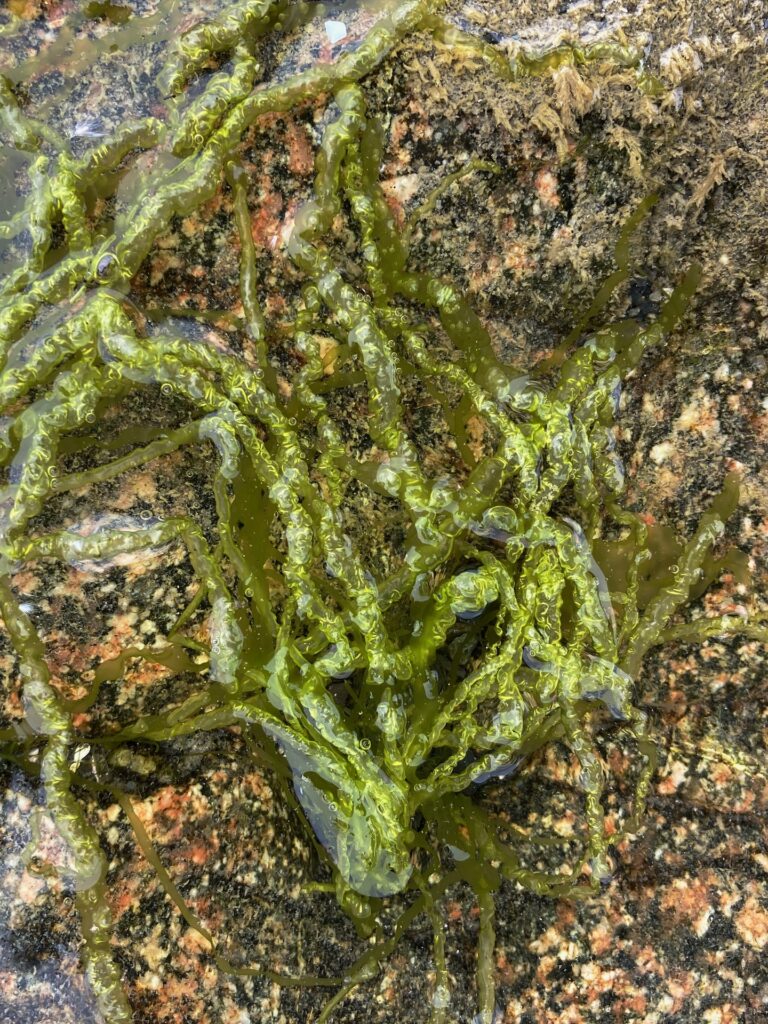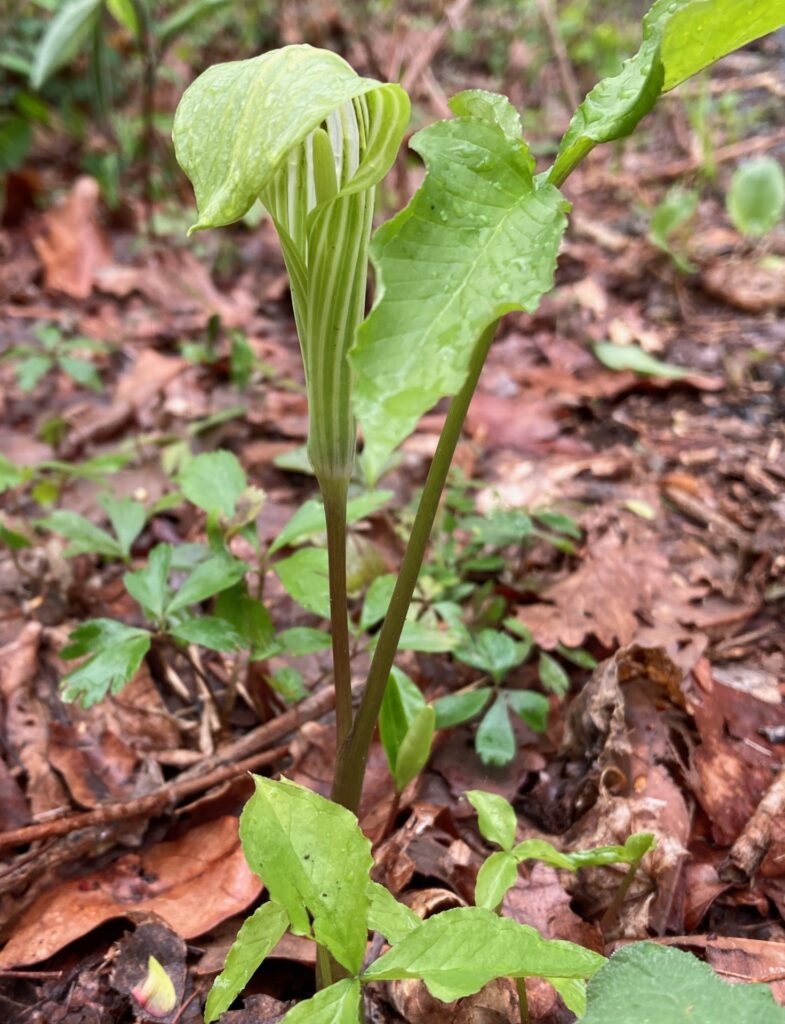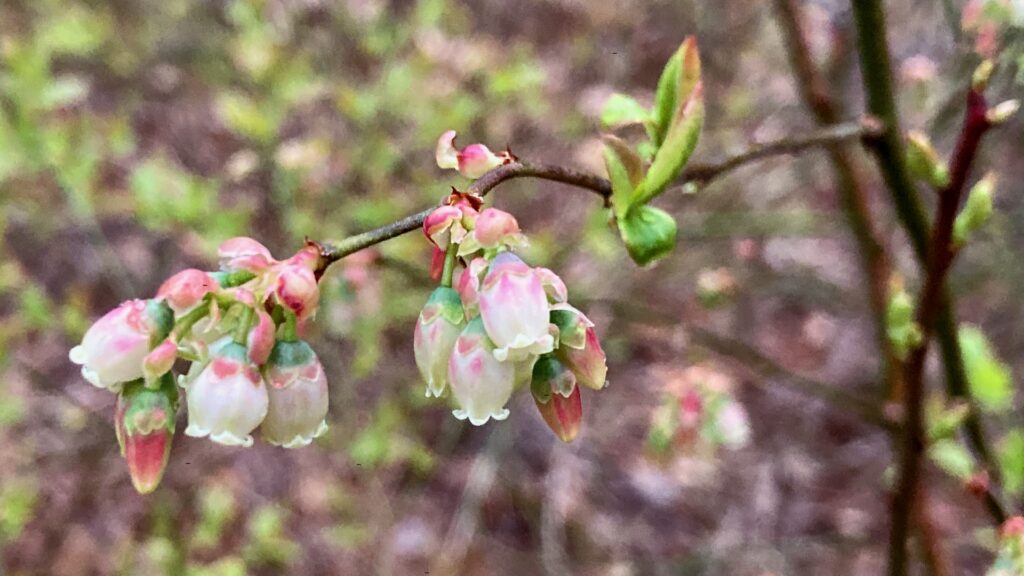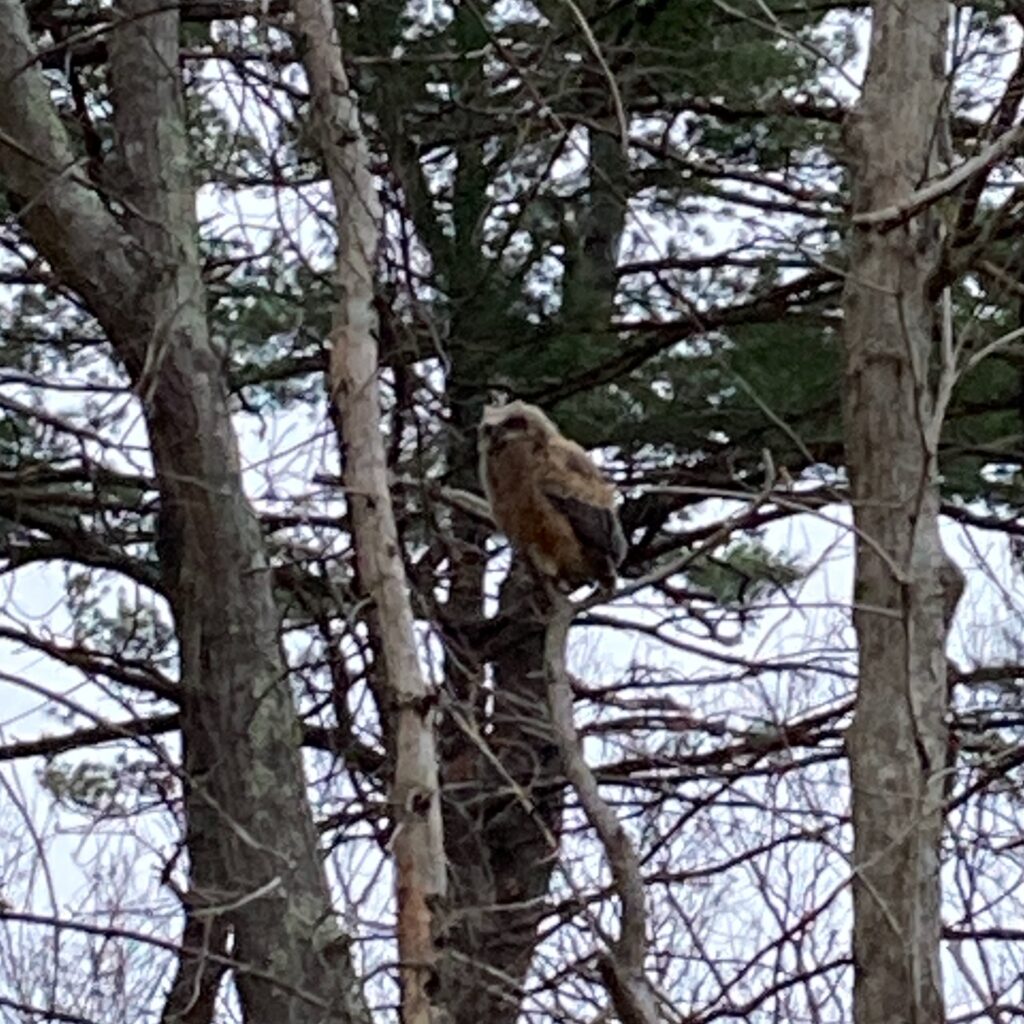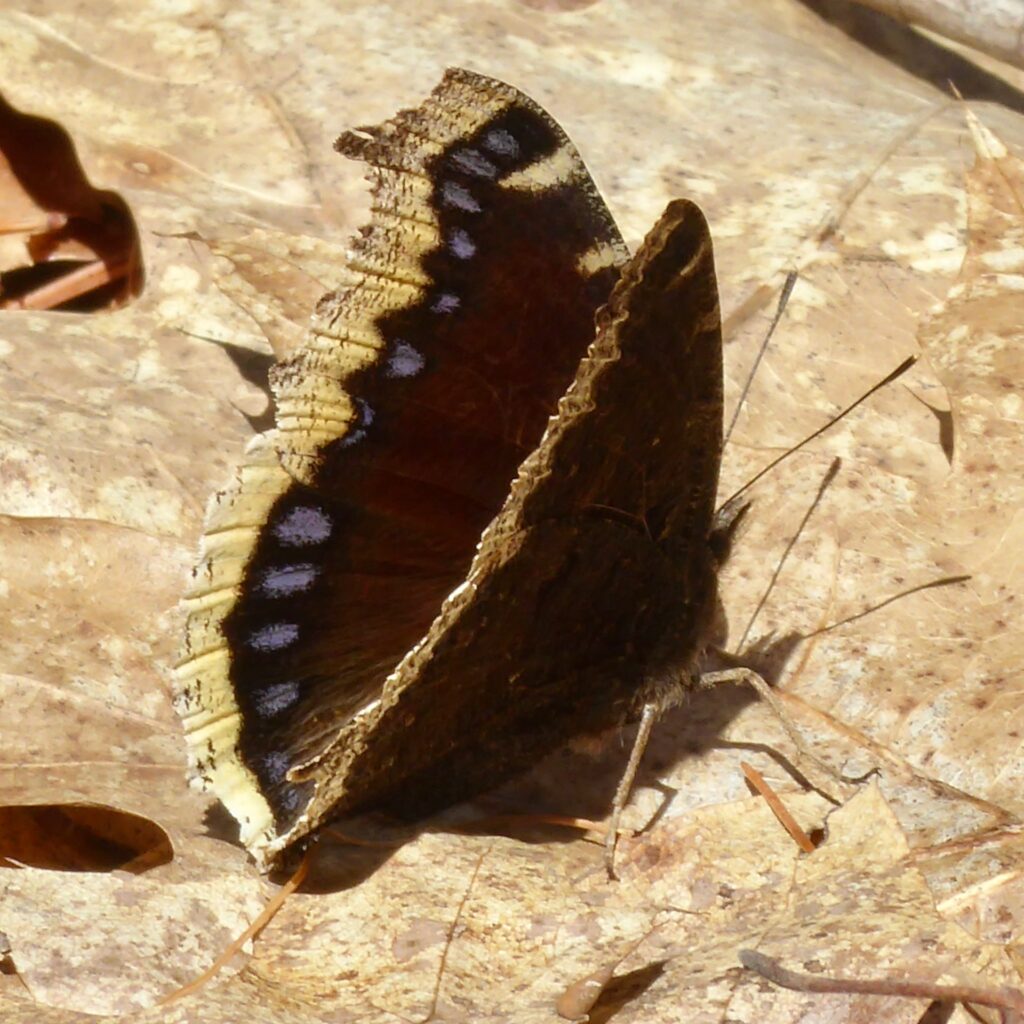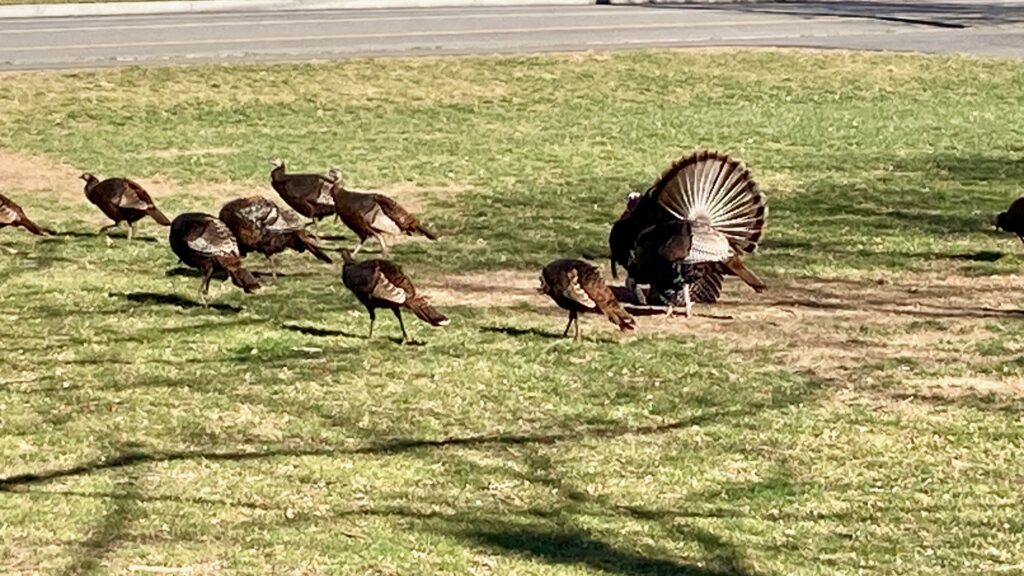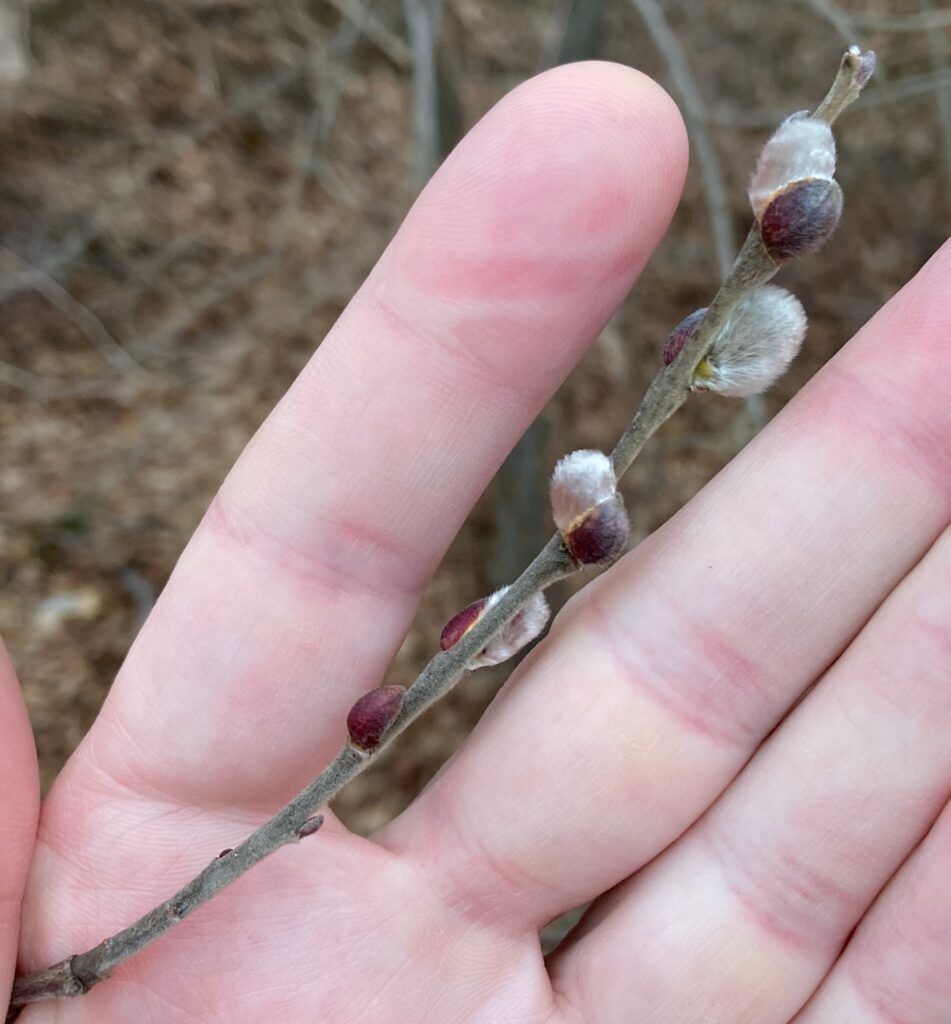Carol and I went for a day trip to Cape Cod. The first place we went was Sandy Neck in Barnstable. As we walked from the parking lot to the beach, someone said, “Are you here for the whales?”
About 80 North Atlantic Right Whales have been hanging out around Cape Cod. The Cape Cod Canal has been closed once or twice because one or more whales have entered it — a primary cause of North Atlantic Right Whale mortality is vessel strikes. Since there are only about 370 of these whales left in the whole world, it’s worth closing the canal to keep them safe.
We didn’t see any whales, so we walked up the marsh side of Sandy Neck, where we saw the carcass of a pilot whale that had died on the bay side and had been hauled over to this side to rot. After an hour of walking, we crossed back over to the beach. When the ocean came in view, I got my binoculars and started to scan for whales. Almost immediately, I saw two — no, three of them — just at the limit of visibility, where the ozone started to blur things.
Just as I told Carol, one of the whales breached. Given the visibility and the distance, mostly what I saw was the huge black mass of its body coming up out of the water, the water foaming white around it, and what looked like white patches on one side of the animal’s body — right whales do have white markings on their bellies. Carol got her binoculars up in time to see the huge splash it made when it re-entered the water.
We watched for a while longer. We could see the surging water around the whales, and maybe we glimpsed a sight of the black heads. Then they disappeared. Maybe we saw them for 60 seconds, or even two minutes — not a long time, but a very memorable time.
